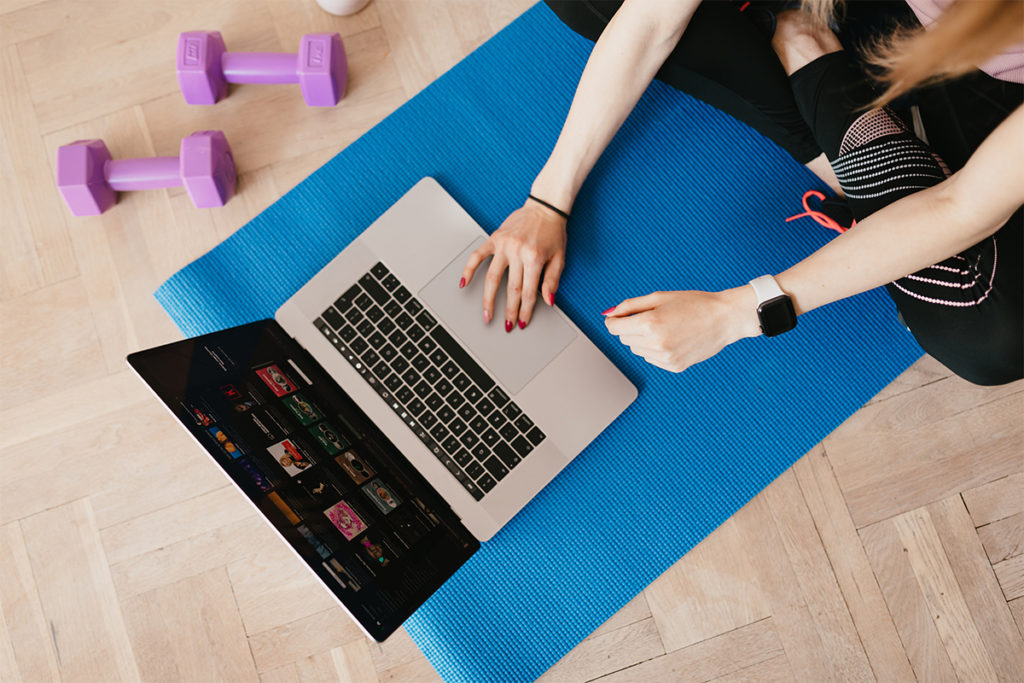Successful Studio Owner, Close to Home
Leah Putnam's commitment to balancing multiple roles led to the creation of a thriving backyard business.
Leah Putnam, owner of Spring Training® in Mountain View, California, began her career in the 1980s as a fitness professional and a personal trainer, traveling to clubs and offering private trainings in homes. She began studying Pilates in 1991. During her instructor training, she learned under several master trainers, including Jillian Hessel, who had a residential studio, stimulating Putnam’s imagination. By the time Putnam completed her Pilates teaching certification in 1993, she had put in detailed requests for the “studio of her dreams” with her husband, a contractor, who was building their family home while Putnam was pregnant with twins. She spent the second half of her pregnancy buying equipment and setting up the administrative side of her business. Two healthy baby boys were born in May 1994; Spring Training officially opened 8 weeks later.
How would you describe the build-out of your studio?
Luckily for me, our property in Mountain View was blessed with a large garage, workroom and storage room on the side of and toward the back of our house. The workroom became my studio. We raised the ceiling, added two skylights and added wall mirrors. This opened up the space, bringing in lots of natural light. We [introduced] different textures by framing the windows in wood and by faux-finishing some of the walls.
Since the original build, I’ve expanded the studio space twice to include the storage room and half of the garage. From the outside, the garage looks like a free-standing building with one door leading to the studio and the other door leading to my husband’s workroom. On the inside, my husband’s workroom and the studio share a wall. The studio is large enough for me to run teacher trainings and workshops. I’m fortunate to have such a lovely space with natural light and views of the backyard garden.
Upstairs (in our family home), I share office space with my husband, who also runs his business from home. The space is small, but it can fit as many as four people working at a time.
What kind of equipment do you use in your studio?
In 1996, I became certified in the GYROTONIC Expansion System®. Over time, I’ve added two pulley tower units and all the specialized GYROTONIC ® equipment. I have one reformer, one “trap” table and one chair, along with the smaller Pilates handheld and balance equipment. The studio is in an “L” shape; on one side I have Pilates; on the other, GYROTONIC exercise. It works well.
What is the revenue model for your business?
Besides myself I have five trainers—all independent contractors—working at the studio. All training revenues go to the studio. The contractors submit invoices for their services. I perform approximately 70% of the training. I’m working to change that percentage in favor of the other trainers.
We offer both private and semiprivate sessions. With GYROTONIC sessions it’s easier to have everyone together, since we have two towers. With Pilates, we have one person working on one apparatus and the second client working on another. It keeps the trainer jumping. As of late, I’ve not been focusing on teacher training. My revenue stream is solely training.
What are some of the benefits of having a studio at your home?
Although the studio is at my home, it’s in a separate building. The space is truly separate from the house—when clients are in the studio, they don’t really connect the two. It has a relaxed and comfortable feel, but once you step through the doors of Spring Training, it’s clear you’re in a serious workout studio.
Benefits include convenience, low overhead, ample street parking, no commute and the ability to maximize my business write-offs. I’ve been able to be at home with my two boys while they’ve been growing up. Raising my boys has been very important to me. My studio arrangement has allowed me to do this and, I believe, to do it very well. My boys have grown up in the fitness world; it has played a big part in shaping who they are today. They’re proud of me and of my studio; I’m proud of them.
What are some of the negatives of a home studio?
This type of arrangement is definitely not for everyone. Some people don’t want to be so close to their work—it’s hard to differentiate roles. Owning your own home business is a full-time lifestyle. It has the same demands and expectations as a retail studio. You must service your clients and maintain standards in the same professional manner. When I’m finished training clients, I turn my attention to business administration.
Some other disadvantages include the fact that it is limited in space, especially when the trend is going toward group classes. Without street exposure I’m limited in visibility and rely heavily on word of mouth and the Web. I’m also limited in my exposure to other trainers who are looking for a place to work. I do find that once potential instructors step into the studio, they really love the space. I’ve been fortunate to work alongside many outstanding talented trainers in the studio.
Another drawback is that potential clients may discount the studio, because it is at a home. Maybe they have in their mind that I’ve set up shop in the dining room and they will have to walk by laundry that needs to be folded.
How do you balance home and work life?
Since my office is so close, I can get drawn into work very easily. Separation is key. I’ve learned to set my priorities so that I make time for my family and for my own well-being. We’re grateful that we have a second home up in the mountains that we go to on weekends and holidays. It completely gives my husband and me the downtime that we need since we’re both so close to work.
What advice would you give to others who are contemplating opening their own studio?
Remember that we are a service industry. I grew up in the service business. My father was a highly successful restaurateur who accomplished an amazing amount in his life. Service is key. It starts with “setting the table,” so to speak, for every single client. The studio is always put back together between clients, and they are greeted with a clean and orderly space. To me, their experience begins at the front door.
Shirley Eichenberger-Archer, JD, MA
Shirley Eichenberger-Archer, JD, MA, is an internationally acknowledged integrative health and mindfulness specialist, best-selling author of 16 fitness and wellness books translated into multiple languages and sold worldwide, award-winning health journalist, contributing editor to Fitness Journal, media spokesperson, and IDEA's 2008 Fitness Instructor of the Year. She's a 25-year industry veteran and former health and fitness educator at the Stanford Prevention Research Center, who has served on multiple industry committees and co-authored trade books and manuals for ACE, ACSM and YMCA of the USA. She has appeared on TV worldwide and was a featured trainer on America's Next Top Model.





